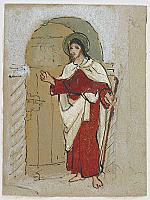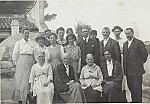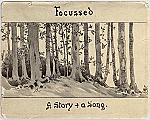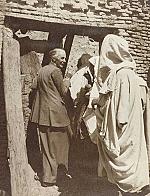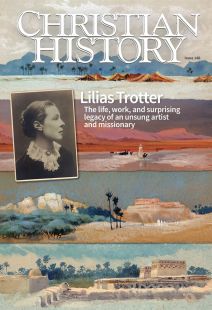Reaching the “Brotherhood men”
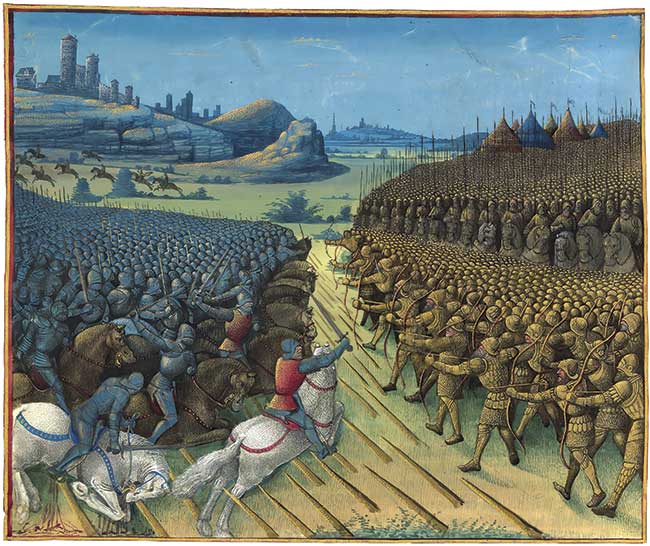
[Passages faiz oultre mer par les François contre les Turcqs et autres Sarrazins et Mores oultre marin, 15th century. Department of Manuscripts. Bnf fr. 5594—Public domain, National Library of France]
For the first millennium of Islamic history, Muslims related to Western Europeans from a position of strength. Their frequent conflicts were often characterized by Muslim attack and Christian defense, though the Crusades proved a massive temporary exception and the Spanish Reconquista a more permanent one. Culturally and intellectually, medieval Muslims, though they had learned from Greek and Syriac Christians, saw Europeans as barbarians on the cold northern fringes of civilization. The medieval Islamic world, vast and culturally unified, stretched from Spain to India; scholars could travel and exchange ideas freely in Arabic or Persian. Western Europe seemed parochial by comparison.
The tide turns
From the late seventeenth century on, however, the tide turned. After the second siege of Vienna in 1683, the Ottoman Empire ceased being a serious military threat. Europe also began to take the lead economically and technologically. As ideas of liberal democracy spread within the Western world, and Europeans colonized more and more of the globe, they came to see Islam as just one among many less “advanced” cultures and religions. Fascination with the Islamic world continued; exotic stories glamorized its supposed beauty and cruelty. Scholarship on the “Orient” grew and flourished. But by and large, Westerners were confident of their superiority. By 1920, after the Ottoman Empire collapsed, most Muslims lived under the rule of Europeans, except for those on the Arabian peninsula and in the Republic of Turkey.
For the majority Sunni tradition of Islam, this European conquest represented a major spiritual and political crisis. Two contrasting reform movements arose within Islam to explain and respond to this situation. Some Muslims argued for a “secularization” of Islam along the lines of revolutionary France. They did not deny the religious truth of Islam, but they argued that social and political structures should be based on purely secular principles. A second group (the ancestor of modern Islamic fundamentalism) argued, in contrast, that Islam comprehensively provided a basis for every aspect of life and that the Qur’an contained all truth—scientific and political as well as religious.
The foil for both these reform movements was traditional Islam—a complex system of religious and social structures with two major components called the “body” and the “soul.” The “body” was shari’a—the complex traditional law that governed the life of a devout Muslim.
While shari’a included precepts for governments, the actual law codes of Muslim governments had historically not been identical to it. (Fundamentalist Islamic believers would change that.) At its core were the Five Pillars—five daily ritual prayers, profession of faith in God and acceptance of Muhammad as God’s messenger, giving away 2.5 percent of one’s income, the Ramadan fast, and pilgrimage to Mecca.
The brotherhoods
The “soul” of Islam consisted of the practice of Sufi mysticism. Sufi brotherhoods were key Islamic institutions with lodges in every town, and tombs of Sufi saints were places of pilgrimage until the reformist Wahhabi movement of the early nineteenth century destroyed them. Sufism shaped much Islamic folk belief and practice. In the modern era, both Western observers and Islamic reformers came to see it as a form of magic and superstition, a hindrance to the modernization and rationalization of the Islamic world.
At the core of Sufism, as Lilias Trotter came to recognize, was hunger for union with God. Sufis started with key Islamic principles of tawhid, the oneness of God, and islam, total submission to God (from which the religion derives its name). True submission for the Sufis was union in love. Algeria had a particularly strong Sufi presence, as did North Africa generally.
By the time Trotter arrived in 1888, Algiers had been under French control for more than 50 years, though colonial intervention in the interior was much more recent. The initial conquest in 1830 was one of the last acts of the French Bourbon monarchy, an attempt to shore up patriotic fervor in the face of brewing revolution. That 1830 revolution ushered in a more liberal constitutional monarchy, replaced in 1848 by the Second Republic, then in 1852 the Second Empire under Napoleon III, then in 1870 the Third Republic. Napoleon III, though relatively sympathetic to the Arabs, never implemented attempts to give them some independence and to protect them from losing land to French settlers.
When Trotter arrived Algeria was a segregated society, with land and power in the hands of the French. As French nationals native Algerians could serve in the French military, move to France, and avail themselves of French systems of justice or traditionally Islamic courts. To have these rights, however, they had to renounce Islamic law, something only a small minority were willing to do.
Colonial Algeria was divided between coastal areas where French influence dominated and the vast interior, highly resistant to French culture and colonization despite the fact that the French had taken much of the land.
The most successful Algerian opponent of colonization was Sufi leader Abd-el-Kader (1808–1883), who ruled much of the country between 1832 and 1847. His courage, brilliance, and moral character impressed his French opponents, and after his 1847 defeat and exile, he won further acclaim by defending Christians in Damascus against a Muslim mob.
In contrast the French colonizers, who saw themselves as having a “civilizing mission” in Algeria, engaged in frequent atrocities and eventually resorted to extermination and deportation against the resisting interior. As much as a third of the Algerian population may have died from massacres, disease, and starvation. The French deported entire tribes to remote parts of their empire such as French Guyana. One French officer described French policy as destroying “everything that will not crawl beneath our feet like dogs.” In the 1880s this “policy of extermination” was only beginning to change to a “policy of penetration.”
Scarred and divided
Trotter’s Algeria was thus scarred by decades of violence and sharply divided. Europeans primarily stayed in coastal areas and interacted with other Europeans or Arabs who had adopted European ways. The French government took a dim view of Trotter’s determination to live in the Arab quarter and evangelize Arabs. French bans on “propaganda,” primarily directed against revolutionary anticolonial movements, restricted her missionary endeavors as well.
For a while, due to French investigation of her activities and restrictions on her contact with Arabic speakers, Trotter switched her focus to French-speaking people. But from the beginning, despite initially not knowing Arabic, she was determined to engage directly with indigenous culture.
Her initial impressions were not positive, and even her favorable comments can sound patronizing now. Like most Westerners of her time, she tended to describe “Oriental” cultures as exotic and “colorful.” At the same time, she resolved to recognize the full human dignity of the people she interacted with, and flippant comments from fellow Europeans that the Arabs were a “doomed race” angered her.
She replied that, instead, Arabs had a “doomed creed”: Islam, a “dead morality” with no truly transforming effect on character. While seeking common ground, she uncompromisingly expected converts to break with key Islamic religious distinctives. In particular she asked them to refuse to fast during Ramadan, which led to particularly intense opposition and persecution from their Muslim family members. She suspected the use of drugs and magic in causing converts to relapse.
In her first encounter with Islamic communal prayer, she commented on its spiritual “emptiness,” though she noted the hunger for God that she heard. But as she began to travel in the interior, she commented that people there seemed more aware of their own sinfulness and found them eager to read the New Testament and learn more about Jesus, whom (like all Muslims) they revered as a prophet.
Union with God
Trotter became increasingly fascinated by the Sufis, or as she called them, the “Brotherhood men.” While she found their mysticism “fanciful” and many of their practices “weird,” she also recognized their craving for union with God. The Sufis she spoke to in southern Algeria seem to have recognized her as a fellow traveler on the Way, inviting her in on at least one instance to visit the local brotherhood lodge, something women were not usually allowed to do.
Trotter believed that God was at work in Sufism preparing the way for the gospel, just as renewal movements in Christianity had, in her view, begun among mystics. Quite early in her time in North Africa, she quoted Abd-el-Kader approvingly, referring to him as a Muslim “saint.” Toward the end of her life, she produced her famed book aimed at evangelizing Sufis: The Way of the Sevenfold Secret (see p. 34). She began it by acknowledging that Christians and Sufis were engaged in fundamentally the same spiritual quest. But she argued that in Christianity, union with God is given at the very beginning of the spiritual path through faith in Christ, and she used the seven “I AM” statements of Jesus from John’s Gospel (the Gospel she relied on particularly heavily for evangelizing Muslims) to show this.
Trotter was not the only European connecting with Sufism. Charles de Foucauld (1858–1915), a French military officer traveling widely in North Africa, became a monk in 1890, settled among the Tuareg, and became a scholar of Tuareg language and culture and a Christian mystic immensely influential on twentieth-century Catholicism. Louis Massignon (1883–1962), influenced by de Foucauld, experienced a Christian conversion while traveling in the Middle East, which he attributed in part to encountering Sufi spirituality. Massignon devoted his life to the study of Islam, becoming one of the great scholars of the field. He urged Catholics to see Islam as a sister “Abrahamic” faith—a view eventually enshrined in Vatican II’s Nostra Aetate.
Trotter would not have gone so far. But she also evidenced a respectful engagement with culture and a determination to transcend the patronizing, racist paradigm of official French colonialism. In North Africa, as in so many other places, the intercultural contact resulting from colonialism wound up undercutting colonialism itself. For Trotter what mattered in the end was the living gospel of union with God through faith in Jesus, a message she believed was far too powerful and transformative to be tied to European culture. CH
By Edwin Woodruff Tait
[Christian History originally published this article in Christian History Issue #148 in 2023]
Edwin Woodruff Tait is contributing editor at Christian History and a former assistant professor of world religions.Next articles
Artists, angels, apostles, and the abode of peace
Some of Trotter’s friends, colleagues, and mentors
Jennifer Boardman“Turn full your soul’s vision to Jesus”
An ocean of grace and love and power lying all around us
Lilias Trotter“A long drink of cool water”
After she resolved the role of art in her life, Trotter went back to her London work with renewed fervor and dedication.
Miriam Huffman Rockness and the editorSupport us
Christian History Institute (CHI) is a non-profit Pennsylvania corporation founded in 1982. Your donations support the continuation of this ministry
Donate



